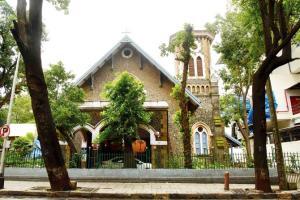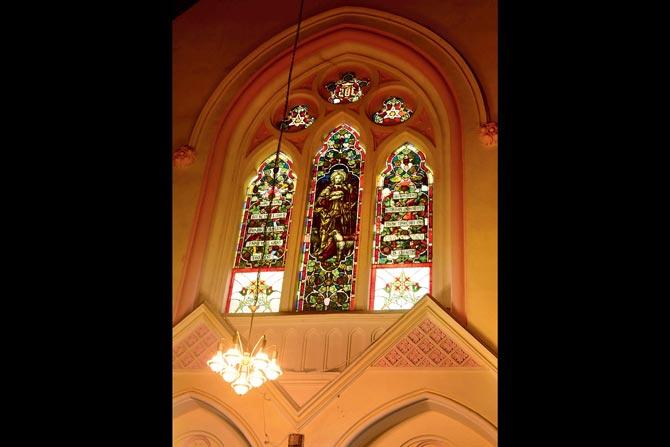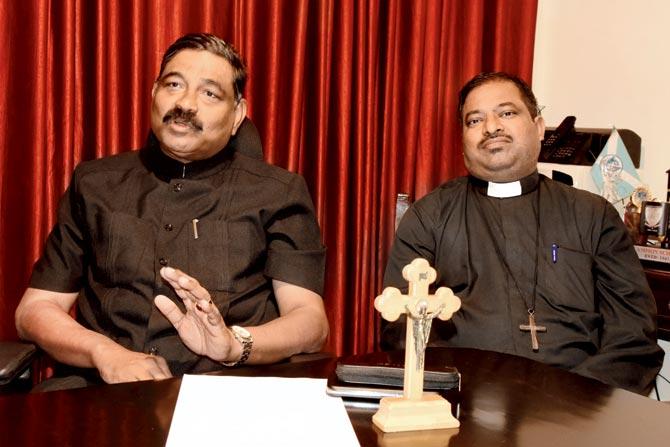A modest 'kirk' tucked away near Sterling Cinema in Fort tells the lesser-known story of the Scottish Presbyterian presence in the city

St Columba's in Fort, one part of The Scots' Kirk
For those of us who were schooled in English, it is likely that the word 'kirk' would have been first introduced to us through The Rime of the Ancient Mariner. Kirk - a quaint, geographically specific word that refers to churches of Scotland. Little did Samuel Taylor Coleridge, who wrote the poem in the late 1700s, know that the word would shortly voyage all the way to India, for Bombay was set to get some kirks of its own.
ADVERTISEMENT
The Scots' Kirk is an unusual entity in Mumbai today, and for many reasons. Firstly, it's a small architectural legacy that the Scots left behind - a memory that is nestled quietly among the more grandiose structures of the colonial English in Mumbai. Secondly, The Scots' Kirk is the common name for two churches located in two different parts of the city - The Church of St Andrew and St Columba. The former is in Kala Ghoda and the latter in Fort. Two locations, one church, even today.

In keeping with the tradition of the Presbyterian kirks, The Scots' Kirk has austere interiors, save for stained glass windows as part of the Gothic Revival. Pics/Suresh Karkera
Bearing the cross
We are at St Columba's, where meals for homeless children are in progress after their evening classes. Dr DPN Prasad, the honorary executive trustee of the kirk, and Reverend G Sudhakar Rao, the kirk's pastor, walk in. Greetings are exchanged, a prayer is made at the altar, and Prasad leads us to their office by the kirk's transept. "The Scots' Kirk came about because of a strange request," says Prasad. Also called the Senior Elder of The Scots' Kirk, Prasad is one of the trustees on board, and was formerly the principal of Bombay Scottish School, in Mahim. A former history teacher, Prasad, who saw his share of public attention and scrutiny as principal, has a wealth of knowledge regarding the Scottish legacy in India. Born a Presbyterian - though he'd prefer calling himself a Christian - Prasad joined the trustees in 1999.

Dr Prasad (left) and the Rev Rao
He traces the history of the kirk back to the time when the Scottish regiment of the British army was stationed in the city, mostly near Azad Maidan. "The Presbyterian Scottish Soldiers of the Scottish Regiment stationed at that time in Bombay desired to have a 'worship service' on Sundays, conducted by a pastor from the Church of Scotland. The East India Company permitted them to have their service in the old courthouse near Lion Gate in Kala Ghoda," narrates Prasad. Eventually, a vacant plot near the courthouse was procured from a rich Parsi merchant, by the name of Homajee Bomajee, and the construction of the first kirk commenced in 1815.
The kirk was named after St Andrew, the patron saint of Scotland, and one of Christ's apostles. The popularity of St Andrew in Scotland is but obvious – right from the flag to the badges sported by the soldiers bear his diagonal blue cross, also called The Saltire. The city's first kirk, however, posed a problem. "Initially, only the worshippers of British origin were allowed to worship at the kirk. A small Presbyterian Indian community wasn't," says Prasad. On request, the Indians were eventually given a piece of land, too, in 1843, and a kirk of their own, bearing the name of St Columba, an Irish abbot who spread Christianity in Scotland.
The lesser-known kirk
In 1938, the two kirks were joined to become The Scots' Kirk to overcome administration issues. Today, services are held at the kirk for about 50 Presbyterian families - a morning one at St Columba's in Malayalam, and an evening one in English at St Andrew's.
Of the two structures, St Columba is lesser known, and is more understated. The 200-year-old structure of St Andrew's is more prominent, as the face of the kirk, rather than St Columba's.
Prasad draws our attention to the simplicity of St Columba's Gothic structure. It's sparsely ornate, with the most adornment reserved in its stained glass windows and its arches. If you look closely, the stained glass bear verses from the Bible.
The Presbyterian kirks of Scotland were well-known for eschewing the rich adornments of the Catholic and Anglican churches. They also introduced open seating instead of the boxed pews that were prevalent. Their austerity of the interiors joined hands with the Gothic Revival of the 19th century, notable in many of the buildings constructed in Bombay around that time, and St Columba is an example of this.
"The Anglican Church's bishop, however, was pretty powerful. The English had their St Thomas Cathedral [at Horniman Circle], and it seemed they didn't want the kirk steeples to be taller than theirs. The English and the Scots have had their problems with each other," says Prasad. In 1930, however, a bolt of lightning brought down St Columba's belfry, crashing its bell along with it. Since then, St Columba has been devoid of a belfry, and was gifted a bell only recently.
"Both the churches used the talents of Arabian shipbuilders, who could build high ceilings with wood. In fact, the Scottish establishments in the city and the Arabian shipbuilders have quite a connection in Mumbai. You will find that the flagpole at Bombay Scottish School is in fact a ship's mast," says Prasad. He adds, "There are just a few establishments across the city, including Wilson College, that remind us of the Scottish legacy."
Presbyterianism in Scotland
Presbyterians are a part of Calvinism, a major branch of Protestantism that broke away from the Catholic Church. Its roots are particularly in Scotland and Ireland. In Scotland, it traces its roots to St Columba, but was spread mainly through John Knox in the mid-1500s. Presbyterians emphasise the sovereignty of God and the authority of the Scriptures.
Catch up on all the latest Mumbai news, crime news, current affairs, and also a complete guide on Mumbai from food to things to do and events across the city here. Also download the new mid-day Android and iOS apps to get latest updates
 Subscribe today by clicking the link and stay updated with the latest news!" Click here!
Subscribe today by clicking the link and stay updated with the latest news!" Click here!







